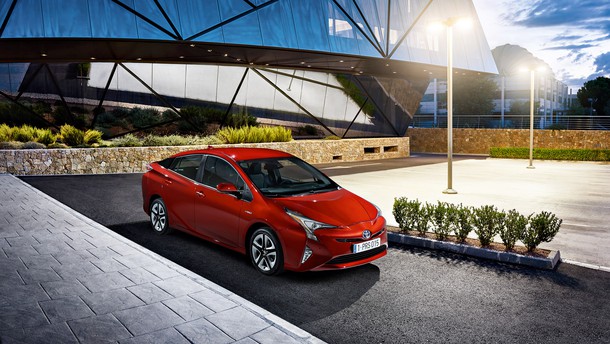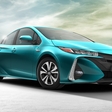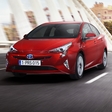
It wasn't an easy start. A pioneer will inevitably encounter difficulties, skeptical faces, and possibly even disappointments. It's a challenge to persuade people to buy a new product without being able to assure them that their purchase is a rational one. Especially when the car of interest is a relatively expensive vehicle that may be neither powerful nor prestigious, though it is environmentally-friendly. It turns out that the world's buyers take environmental issues more to heart than we might have thought. What's more, the Prius actually triggered praise and a sort of euphoria in some buyers, including Hollywood stars, who wanted to show the world that they were nature lovers. And so they did, by buying a Prius. This, of course, went a long way to help the rise of this first serial production hybrid. So it stands to reason that we should examine its history.

The Japanese were the first to drive it on public roads, back in 1997. The powertrain consisted of a 1.5-liter VVT gas engine (with Atkinson cycle) and an electric motor with 33 kW or 45 hp. By 2000, its sales expanded worldwide, with 90 global markets covered. The largest, of course, were the home and US markets. The first ten years, covering the first and second generations (the second boasted a design makeover, revamped hybrid powertrain and smaller, lighter, more efficient batteries), saw an incredible million buyers, with another million added in just two years, with the introduction of the much-altered third generation. Apart from a design makeover, the third generation Prius starred a powertrain that was a third more powerful than that of the first generation, while CO2 emission and fuel consumption was reduced by 25%. Through the middle of 2013, Prius boasted more than three million customers. Today, there are more than five million worldwide (including various bodywork versions and third-generation plug-in hybrids).

Prius made a bold statement with its unusual design. Though design was never prioritized, it was immediately clear that it was something different. You either loved it or you didn't. Some bought it precisely because it did look so different. If the original design was divisive, and if we have grown accustomed to the second and the lightly-revised third generations, then perhaps we expected the latest version to look much more like a conventional car?
Toyota had other ideas. They insisted on Prius being something special, both in its technology and design, and distinct from traditional passenger cars. As a result, its exterior hasn't changed much, except in some details that recall a higher-tech Mirai. Thus the new Prius is once again designed to polarize opinions, while making sure it ishighly-visible and easily-recognized.
On the other hand, the new Prius is linked to the new TNGA platform (Toyota New Global Architecture), which makes it 60 mm longer, 15 mm wider and 20 mm lower than its predecessor. The body is stronger, and the car's center of gravity is lower by 2 cm (thanks to the position of the new platform and powertrain), which is a big step forward in terms of driving dynamics. Along with a completely new rear axle, these modifications result in better handling and a more stable car, which fulfills the objectives that Toyota envisioned: a Prius that is more sensitive and appeals to the driver who owns a car not merely as a device to carry them, as economically as possible, from point A to point B. Because of the new TNGA platform, the interior is entirely different. First and foremost, the driver's seat was moved down. The height of the seat is now almost 60 mm lower, so even taller drivers can easily slide behind the wheel (despite 20 mm lower roofline). This eliminates that old feeling that the driver was sitting on, rather than in, the car. The radically redone interior includes a new dashboard, steering wheel and center console, which Toyota claims is much more ergonomically friendly than the past versions.

The powertrain in the new Prius has been engineered so as to ensure efficiency and economy, while offering uncomplicated, hassle-free driving. The continuously-variable transmission had been modified to feature a reduction in friction by 20%, while the whole hybrid system is lighter than the previous one, also thanks to a smaller electric motor. The weight of the nickel-metal hydride (NiMH) battery pack remains the same, but the batteries boast a higher energy density, so you can store more electricity than before. The new Prius will be available in an Eco version (while it may not hit the European showrooms, it will certainly be sold in the domestic and US markets), which will have li-ion batteries instead of NiMH batteries. Lighter in weight, the li-ion batteries will perform just as well, and will make the Prius Eco (along with the fact that there's no spare wheel) more economical. And, because the battery is not only 30 pounds lighter, but also takes up less space, it is not hard to imagine where Toyota might find a place for a more powerful battery in a plug-in hybrid Prius, which is expected to go into production this October. The same goes for a four-wheel drive electric version, though these will be exported with a noticeable time lag.

The 1.8-liter VVT petrol engine, with its Atkinson cycle, has also been upgraded, now boasting 40% thermal efficiency. Though both engines are less powerful than their predecessors, they are more effective and electric motor is smaller and lighter.
In spite of 100 hp arriving from the petrol engine, and an additional 70 hp from the electric motor, the system will produce "only" 122 hp, whereas the previous versions fired up 136. This is indeed less, but Toyota says that, in the face of other improvements (and because the maximum torque at 105 Nm is now available at lower engine revolutions) the reduction in power isn't important, except in fuel consumption, which has decreased by a huge 18%, compared to the previous Prius.
And what's the new Prius like when you sit behind the wheel? The seating is much better and more comfortable. The sound insulation is improved, and the headroom in the rear is more spacious. The trunk is significantly bigger than it was in the past, which is no surprise, because the batteries have migrated underneath the rear seats.

And the chassis? Lower ride-height and 15 mm wider track is very noticeable, and makes the car feel more agile and responsive to the driver's commands, improving the joy factor.
Toyota has clearly managed to achieve many of the objectives they set themselves for their new Prius. What this means for its performance in the market, however, remains to be seen.



